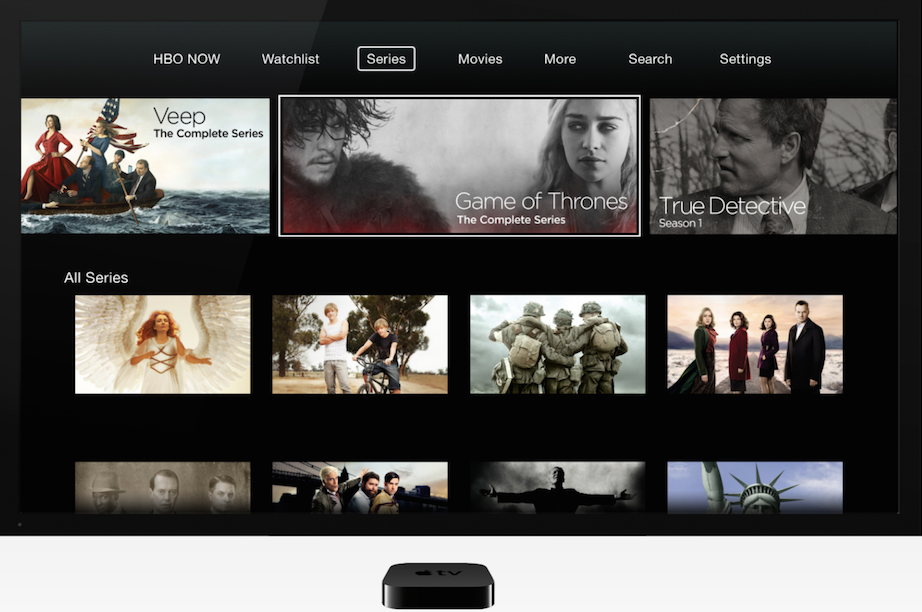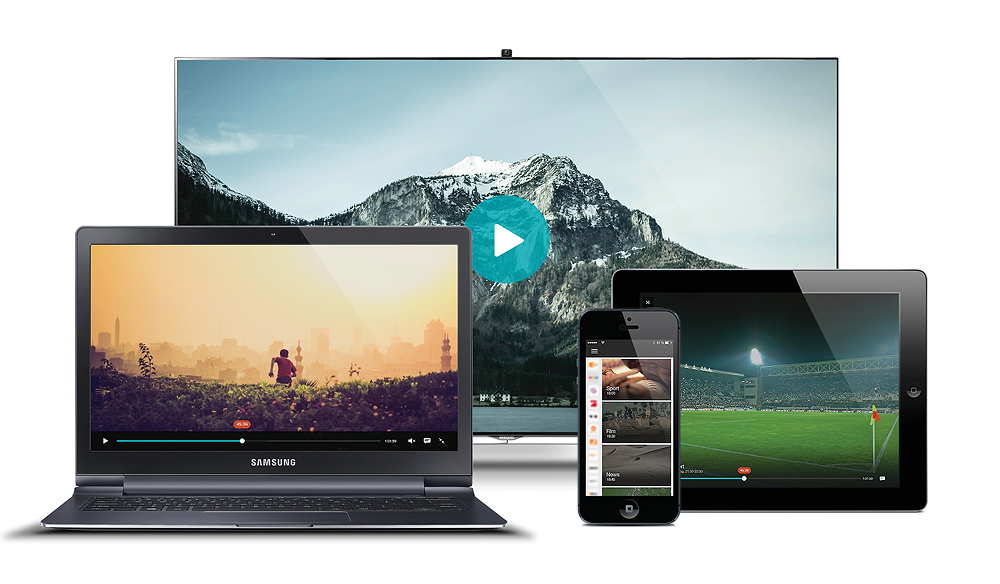
After more than 35 years of operation, TBI is closing its doors and our website will no longer be updated daily. Thank you for all of your support.
Channels switch on OTT
 Premium, basic pay and free TV channels around the world are looking to OTT and direct-to-consumer services to reach customers who are leaving the traditional TV space, or those that were never there in the first place. Stewart Clarke talks to analysts and execs about how channels are going over-the-top.
Premium, basic pay and free TV channels around the world are looking to OTT and direct-to-consumer services to reach customers who are leaving the traditional TV space, or those that were never there in the first place. Stewart Clarke talks to analysts and execs about how channels are going over-the-top.
Getting the established pay TV channels to talk over-the-top and direct-to-consumer (D2C) can be challenging, largely because they are mindful that while there is a real opportunity, they need to carefully manage the relationship with the pay platforms that, today at least, pay them a sizable chunk of their revenues in the form of carriage fees.
Several of the biggest players have, however, made the leap into D2C and OTT.
HBO – as the service with perhaps the most to lose from Netflix, which is hooking its marketing on the kind of high-end drama once the preserve of premium cable – launched its OTT service HBO NOW offering in April. The service has had over one million sign-ups, although how many are taking the free trial and how many are paying the US$14.99 monthly fee is unclear.
Showtime followed suit in July with its US$10.99 American OTT service. A third premium service born in the US, Starz Play, has not gone out in the States yet, but launched as an international SVOD service that rolled out in the Middle East in June. The likes of Vice, meanwhile, started out as physical and online products and are reversing into TV.
A key consideration for channels is how to embrace OTT without eating into their traditional audience on pay TV or over the air. The premium US cablers have mostly replicated their linear offering, banking on reaching bingeing millennials with line-ups of mega-budget programming.
At the lower end it is more of a challenge for the basic channels, without that layer of premium programming or a deep library of rights. Discovery Communications, which runs a large family of basic channels, is somewhat different in that it wholly owns a large catalogue that it can deploy where and when it wants. It is thusly embarking on an ambitious D2C offer with Dplay, which is expanding on initial distribution in the Nordics, in a move reported by TBI in June.
“It’s not in our best interest that OTT undermines the pay TV business, so we’re evolving it in a way that we think, based on pricing; the way it is packaged and accessed enables it to exist in a multi-model ecosystem of pay TV, free TV and OTT,” JB Perrette, president of Discovery Networks International, told TBI at the time.
The Discovery boss highlights a crucial point: a greater challenge for pay channel operators than eating into their existing audiences is managing the relationship with the pay TV operators that pay them carriage fees, and who are also fretting about bleeding subs to OTT services.
“Cannibalising audiences is less of a problem than jeopardising carriage relationships – the effects on carriage deals are likely to be felt well before the impact on audiences are noticed,” says Richard Broughton, research director at media research business Ampere Analysis.
A middle ground is the system used in the US, whereby channels can offer subs over-the-top services, but that can only be accessed via a protected system. “Ultimately, a US-style ‘authentication’ system may well prove to be an acceptable middle-ground, allowing channels some degree of freedom without risking the carriage fees,” Broughton says.
What OTT does give channel operators is leverage in carriage talks at a time when operators are playing hard ball, a trend highlighted in August when Liberty Global boss Mike Fries told investors that the multi-country pay TV operator would be shifting spend from linear channels to online and digital rights. Liberty had already sold out of its linear channels business Chellomedia.
While looking to drive down fees, the pay TV operators are also concerned about ‘cord-cutters’, ‘cord-shavers’ and ‘cord-nevers’. Tony Gunnarsson is a senior analyst at research house Ovum, part of the same media group as TBI, Informa. He says these are real threats, but that the OTT opportunity must be seen in perspective.
His research shows that in the most developed OTT market, the US, OTT revenues are about 15% of total pay TV revenues and only increasing 1% or 2% a year, meaning that even in several years’ time OTT’s market share will still be just 25%.
Clearly a problem in the US, cord-cutting is not, however, a global issue. Pay TV numbers are decreasing in Europe, but not consistently by territory, and throughout Asia and Latin America there is growth.
Asia is a hive of channel-based OTT activity. A+E Networks is rolling out a History Plus-branded OTT service on the 4ME OTT platform, which is a free service that was launched by Filipino broadcaster TV5 and Singapore-based channel operator Brand New Media earlier this year. It will be programmed with short-form History fare.
Fox International Channels is also getting into the OTT space, rolling out Fox, Fox Sports and National Geographic in China, Japan, Malaysia and the Philippines. Prakash Ramchandani, vice president and head of non-linear products at Fox International Channels Asia, says the new services are programmed with a mix of new and library programming.
“Unlike the US, pay TV penetration is still relatively low in many markets across Asia, so there’s still much growth potential,” he says. “Offering options, whether by a traditional player or a new player, will only enlarge the pie and bring more pay TV viewers into the ecosystem. Cannibalisation isn’t really a concern.”
Saban Capital Group, Lionsgate Entertainment and Astro-backed Celestial Tiger Entertainment is another well-known operator of pay TV channels in Asia, and is about to launch an OTT version of its Kix action channel called Kix 360, which will have its Bellator fighting coverage and series including Top Gear.
“We’re creating a dedicated, customised, linear feed for OTT,” says Todd Miller, CEO of CTE. “We trying to go a step further and think about the user experience, especially when they are on the go. As a channel provider it is the next logical step.”
Channels can go OTT in one of several ways: through the OTT extensions run by their existing pay TV platform partners such as Sky’s Now TV, Dish’s Sling TV and Foxtel’s Foxtel Play; via a third-party aggregator; or straight to the consumer.
CTE is taking the first route. “We recognise that some major programmers are looking more direct-to-consumer, but when pay TV in southeast Asia is growing nicely, we want to support that ecosystem with our key partners. For the platforms, OTT fills a gap in the market and the likes of Kix 360 will provide more touch points between them and consumers. You become more valuable to the platforms.”
Miller adds he has been taken aback at the lack of industry learning on the subject of channels, platforms and OTT. “Everyone is trying to figure it out and is making assumptions. It is surprising that there are not a lot of benchmarks or reference points to guide us as to what is optimal,” he says.
FIC Asia has adopted different strategies, making its OTT services available via existing platform partners Astro and Cignal in Malaysia and the Philippines, respectively, and new partners in Avex and Tencent in China and Japan. It has not, however, gone D2C.
Ramchandani says the firm likes the business-to-business model. “This works well for us at the moment as our partners often have extensive experience in the consumer model and a proven track record of distributing our products and content in the most effective way possible.”
He underscores an important point: channels have the ability to go D2C, but pay platforms are long-term specialists in marketing and subscriber acquisition and management. As Ampere research director Guy Bisson puts it: “Platforms are especially good at deriving value from consumers.”
While there are still distribution costs in the OTT and D2C worlds and the returns are not yet clear, it is increasingly a space that channel brands need to inhabit, adds Bisson.
“It gives channels a hedge [as platforms attempt to negotiate down carriage fees], but is also about having a brand in that space and reaching consumers. Regardless of making money, you will need to be in that space to reach millennials,” he says.
Having launched linear TV channels, Jeffrey Elliott of new group TableRock Media says rolling out the OTT equivalent is a much more cost-effective process. “You miss a huge swathe of expense in the middle, the regulatory [costs], distribution and other infrastructure. In TV you need infrastructure to look after your infrastructure.”
Some channel operators are experimenting with full D2C OTT services. “A growing number of channel groups are exploring D2C opportunities to gauge the viability of unbundling their channels and selling them outside the pay TV bundle,” says Ted Hall, research director at IHS Technology.
“At present, D2C services are providing a means of targeting cord-nevers or those that have cut the pay TV cord in favour of OTT alternatives. However, in the long term, they could serve as channel groups’ primary revenue generator in an increasingly a-la-carte world.”
Hall adds that while channels risk losing ad revenues by fragmenting their audiences, they might be able to pursue better terms with new D2C partners than with the traditional pay platforms.
“Direct subscriptions and more-favourable distribution deals with video-streaming device manufacturers could see major channels better monetise their content than they currently do through carriage deals with pay TV providers.”
Discovery is aiming for one million D2C customers via its new Dplay service and the Eurosport Player. The factual and entertainment offering on Dplay and strong sports line-up on Eurosport Player – bolstered by the Olympic rights, which Discovery has just acquired – give it a good chance of success, says IHS’s Hall.
“The appeal of some other more-niche D2C offerings is less clear,” he adds, however. “A&E’s Lifetime Movie Club, for instance, provides access to films that have aired no less than a year earlier on the Lifetime cable network. Though the service is designed to be complementary and is low-priced, at US$3.99 a month, it does not appear to serve a need that could not be satisfied by Netflix or another OTT aggregator that provides access to archive movies.”
Whether thematic and narrowly-focused D2C services can build a head of steam is a moot point when, as Ovum’s Tony Gunnarsson notes, “Netflix offers something for everyone, from kids right through to indie cinema”.
New players are, however, taking channels to market without ever having had exposure on a traditional EPG or pay TV platform. Out of Canada, TableRock was created by former GlassBox TV founders Jeffrey Elliott and Joseph Arcuri, the latter of whom is also a former president of AOL Canada.
Former Discovery Channel Canada president and HDTV founder Ken Murphy heads the new company’s board, and with the team in place TableRock is now planning super-niche OTT channels.
“We saw that there is an opportunity in delivering niche content over OTT,” Elliott says. “At the start of pay TV people said it was absurd to have a one-genre channel, but they worked, and in 2015 people are willing to pay for well-produced, curated, niche content delivered on-demand.”
TableRock’s first offerings, launching early next year, will focus on specific interest areas including aviation, guitars and motorcycles. “Each of these are multi-billion dollar industries and cover subjects that go under the radar in terms of conventional TV. They are too niche in the old way of doing TV, but work in OTT.”
The company plans to make about 80% of its content, with a guitar show with Rush’s Alex Lifeson being talked about, and a motorcycle show with David Hatch, one of the TableRock exec team and the host of TSN series Motorcycle Experience.
Arcuri says TableRock’s OTT channels can co-exist alongside pay TV, Netflix and YouTube because each fulfils a different purpose. “We liken it to breakfast, lunch, dinner and snacking,” says Arcuri. “Netflix is dinner and YouTube is snacking. We are breakfast and lunch.”
For the big TV brands to survive outside of the platforms in a D2C space, channels need a strong brand and content consumers know as well. HBO ticks both boxes and its HBO NOW service has got off to a strong start (its OTT services in Europe, meanwhile, have struggled).
“HBO NOW is the one to watch,” says Digital TV Research principal analyst Simon Murray. “HBO’s message to the pay TV operators is that people won’t cancel for the service, so it is targeting people who never had cable in the first place. However, if the likes of ESPN follow HBO and do what they are doing with a standalone sports service it would be a big move given how important sport is to the pay TV platforms.”
An ESPN move would be huge for the industry, Murray adds. “Talk of ESPN OTT could be them trying to get a stronger negotiating position with the platforms, but HBO has done it and maybe the likes of ESPN are looking at that,” he says. “Also, what is Netflix missing compared to traditional pay TV? Live content and sports.”
So should the traditional pay TV platforms be running scared? “Yes, but at the moment the [OTT and D2C] economics don’t stack up for most channels. Longer-term, it could be an issue, but the platforms are still well-positioned to perform an aggregator role,” says Ampere’s Broughton.
One company taking that aggregator role to the OTT space is Magine TV. It started in Sweden before launching in Germany and is now rolling out in the UK.
Michael Turner, Magine’s chief content officer, says: “The first thing we did was talk to channels and work out the challenges for them over the next five to ten years. We found their profitability was still good, but they were leaking audience to new services and to the content warehouses.”
Convincing free and pay channels to move onto Magine and treat it as they would a cable or satellite pay platform has been the challenge, says Turner. “There is an initial phase of protective behavior, and our job is to convince channels to treat Magine TV as a pay service with distribution terms and partnership agreements,” he adds.
Magine is set up against the pay TV operators such as Sky, not the SVOD players such as Netflix. The channels inevitably feel pressure from their existing platform partners when a new player enters the fray, but in the basic cable space are largely free to join new services.
“The basic channels do experience tremendous pressure, especially where there is a dominant platform in a territory, but they also recognise it is good for them to have alternatives to the existing platforms,” says Turner. “We think we have a shot at becoming a global pay TV provider.”
While there are as many questions as answers in terms of the right OTT strategy for existing channels, there is a clear winner with each development and each platform or channel launch: content owners. More windows means more ways of extracting value from programming, more buyers and more people chasing exclusivity.
“All major developments in this area see the content owner win out,” says Ampere’s Bisson. “It is a great time to own content.”









